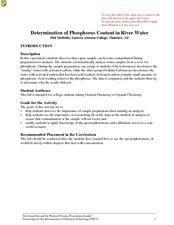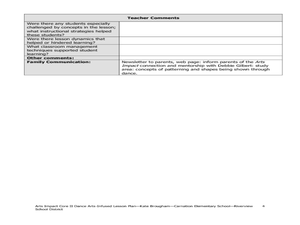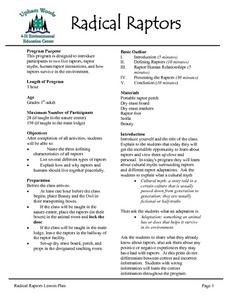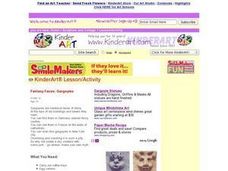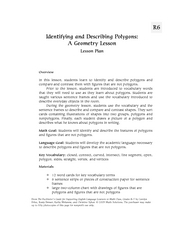EngageNY
Exploring the Symmetry in Graphs of Quadratic Functions
Math is all about finding solutions and connections you didn't expect! Young mathematicians often first discover nonlinear patterns when graphing quadratic functions. The instructional activity begins with the vocabulary of a quadratic...
EngageNY
Normal Distributions (part 2)
From z-scores to probability. Learners put together the concepts from the previous lessons to determine the probability of a given range of outcomes. They make predictions and interpret them in the context of the problem.
EngageNY
The Definition of a Parabola
Put together the pieces and model a parabola. Learners work through several examples to develop an understanding of a parabola graphically and algebraically.
Curated OER
Applied Science - Science and Math Lab
Students investigate topology. In this Applied Science lesson plan students explore higher, more abstract mathematics using tangles. Students make topologically related shapes.
Curated OER
Determination of Phosphorus Content in River Water
Divide your chemistry or environmental science class into two groups. Each group tests water samples from a river for the concentration of phosphorus using a different method. With chemists, you can use this activity as they learn to use...
Curated OER
Dancing Polygons and Non-Polygons with Patterns
Second graders study movements. In this dance lesson, 2nd graders draw patterns selecting one to represent through movement with their body.
Curated OER
Stepper Motor
Learners compare a stepper motor from a traditional motor. In this physics lesson, students summarize how it works. They build their own stepper motor and explore its uses.
Curated OER
Radical Raptors
Students are introduced to raptors and their role in the environment. They identify three characteristics of raptors and list several types of raptors found in nature. They discuss their positive and negative experiences with raptors and...
Curated OER
Adaptations of the Beak
Students examine the principles of adaptation using mouth structure of animals as an example. Students look specifically at the various shapes of beaks of birds and the bill of the platypus.
Curated OER
Star Gazers
Students research stars, constellations, planets and galaxies including names, shapes, sizes, colors, patterns and ages. They suspend the stars and planets from the ceiling and change monthy to display the various constellations. As a...
Curated OER
Throw to the Cone
Students practice throwing to a moving target and increase their facility with accurate throwing by playing this game.
Curated OER
Fantasy Faces: Gargoyles
Students create gargoyles out of paper mache. Instructions for making paper mache pulp are included.
Curated OER
Identifying and Describing Polygons
Students identify the different properties of polygons. In this geometry lesson, students differentiate between polygons and non-polygons. They review important vocabulary to help them understand the properties of polygons.
Curated OER
How Do Airplanes Stay off the Ground?
Young scholars use balloons and string to duplicate Bernoulli's Principle of wing shape and its affect on liftoff.
Curated OER
Polygons
Fourth graders identify and describe lines, shapes, and solids using formal geometric language. They use Inspiration to create a graphic organizer and outline of polygons.
Curated OER
Radioactive Decay/Half Life
Students demonstrate radioactive decay using candy corns. In this Physics lesson, students make predictions, collect data and form conclusions about patterns in radioactive decay.




